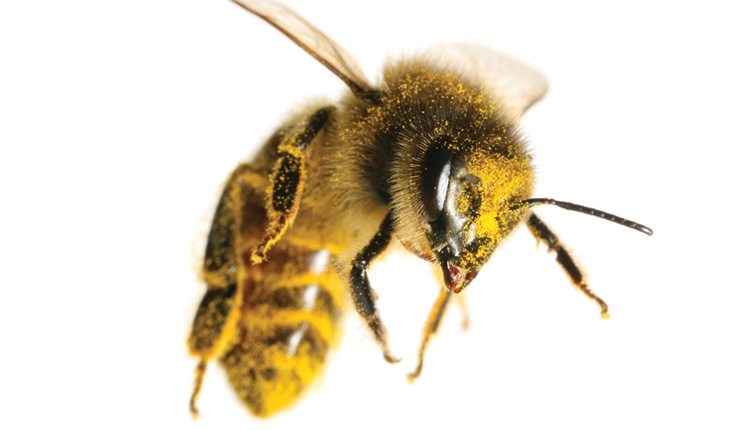Experts provide their assessment of regulations on insecticide treated seed.
_x000D_
July marked the first full year of operation under Ontario regulations on insecticide treated seed. The regulations, implemented in July 2015 for the 2016 planting season, were the first phase of a system designed to curb the use of seed treated with neonicotinoid insecticides. The goal of the regulatory system is to “reduce the number of acres planted with neonicotinoid corn and soybean seed by 80 per cent by the year 2017.”_x000D_
_x000D_
Stephen Denys, director of business management at Maizex Seeds, says: “Despite some challenges, everybody tried to be in compliance with the new regulations.”_x000D_
_x000D_
Most of the onus fell on seed companies and retailers. “Seed companies were generally responsible for education and information prior to the implementation of the regulations, and were also responsible for the implementation of the system,” he notes. “We had to put in place new information systems and create entirely new paper trails. It was quite onerous.”_x000D_
_x000D_
The regulations classify corn and soybean seed treated with imidacloprid, clothianidin and thiamethoxam as Class 12 pesticides. Anyone who sells, offers to sell or transfers Class 12 pesticides must hold a vendor’s license. Sales representatives who facilitate the sale of Class 12 pesticides don’t need licenses, but they must have training on the regulations and carry vendor identification._x000D_
_x000D_
Working with the University of Guelph, the Government of Ontario developed an Integrated Pest Management (IPM) training course for growers who wish to purchase Class 12_x000D_
pesticides. The course includes training on the importance of pollinators in the ecosystem and how to protect them from pesticide exposure. It also includes training on identifying pests, pest scouting methods and on alternatives to pesticides._x000D_
_x000D_
While the IPM course was not mandatory for the 2016 growing season, Gary Wheeler of the Communications Division of the Ontario Ministry of Environment and Climate Change (MOECC) says the uptake was good. “As of Aug. 31, approximately 10,000 people completed IPM training, which included approximately 9,600 farmers,” he says. “Anyone successfully completing the training receives a certificate number. A certificate number will be required to purchase Class 12 pesticides after Aug. 31, 2016.”_x000D_
_x000D_
For the 2016 growing season, growers who wanted to purchase and plant corn or soybean seed treated with a neonicotinoid insecticide were required to complete additional paperwork. If they wanted to plant less than 50 per cent of their corn or soybean acres (a separate report for each commodity), they were required to confirm in writing that they were not buying or using more than was required to plant that acreage. A Seed Amount Declaration had to be provided to the seed vendor, vendor sales representative or the custom seed treater before they could obtain neonicotinoid treated seed. A separate calculation was required for each commodity._x000D_
_x000D_
Growers who wanted to plant neonicotinoid treated seed on more than 50 per cent of their corn or soybean acres were required to complete a pest assessment report. This year, growers were able to do their own assessments but they had to be done in accordance with the guidelines established by the regulations. The assessment reports had to be presented to the seed vendor, vendor representative or custom seed treater before they could obtain neonicotinoid treated seed._x000D_
_x000D_
The Results_x000D_
_x000D_
Wheeler says it’s too early to tell whether the regulations had an impact on the acreage planted to neonicotinoid treated corn and soybean seed. “Vendors were required to submit both neonicotinoid treated and non-treated corn and soybean seed sales data to the ministry by Oct. 31,” he says. “The data will help estimate the acreage of treated seed used for the 2015-16 growing year. The ministry is aiming to release a summary of this data by early February 2017.”_x000D_
_x000D_
Denys says that his initial impressions are that growers were not completely willing to go without insecticide treated seed. “Many growers either chose to continue to plant neonic treated seed or they switched to alternative insecticide treated seed,” he says. “I estimate that there was a shift in sales of between 15 and 20 per cent away from Class 12 pesticides to seed treated with an alternative insecticide treatment. There was only about a one per cent shift to untreated or fungicide only treated corn seed. The shift to fungicide only treated seed was much higher in soybeans.”_x000D_
_x000D_
Did the regulations impact crop yield? According to Denys, while the data from trials hasn’t yet been analyzed, it seems that the weather was a bigger factor than the regulations. “There were some instances of seed corn maggot in soybeans,” he says, but it was so hot and dry in many regions that it will be difficult to measure the impact of the changes that were adopted this year. For example, we were expecting that there would be significant aphid issues in soybeans, but it appears that it was too hot for aphids this year.”_x000D_
_x000D_
Isn’t it Ironic?_x000D_
_x000D_
All of the work to implement and comply with the first year of regulations, came after two very important studies were completed and released. Both appear to indicate that there was no need for the regulations at all._x000D_
_x000D_
Health Canada issued its preliminary re-evaluation of imidacloprid in January 2016. The report found that imidacloprid seed treatment posed no potential risk to bees. The conclusion was: “Residue levels in crop pollen and nectar resulting from seed treatment uses are typically below levels expected to pose a risk to bees.”_x000D_
_x000D_
MOECC’s Wheeler points out that imidacloprid is rarely used to treat corn and soybean seed. “The agency’s reports on thiamethoxam and clothianidin are expected later this year,” he shares._x000D_
_x000D_
The Canadian Association of Professional Apiculturists (CAPA) found that the winter of 2015-16 was the best ever for Canadian honeybees. In July, CAPA reported that the overwintering bee colony losses were the lowest since 2006-07. The national loss was 16.8 per cent. Ontario’s overwinter loss was 17.9 per cent. That is down more than 50 per cent from 2014-15 when wintering losses 37.6 per cent. It is almost 70 per cent lower than the overwintering losses in 2013-14._x000D_
_x000D_
Both of these scientific conclusions were reached for time periods before Ontario’s regulations came into effect._x000D_
_x000D_
Denys says that while these reports don’t seem to have changed the Ontario government’s focus, they did impact others._x000D_
_x000D_
“The government of Quebec was considering similar regulations a few years ago,” he says. “But when they saw a significant drop in overwintering losses, they decided not to rush into regulations that may not be needed.”_x000D_
_x000D_
What’s Next for Growers?_x000D_
_x000D_
As of now, growers can only purchase Class 12 pesticides if they have taken the IPM course and have received a certification number. They must also sign a declaration that they have considered IPM principles in their purchase decisions. Growers also have to complete a pest assessment report for corn and soybeans. The pest assessment can be:_x000D_
_x000D_
1. A soil inspection pest assessment report, which can be conducted by the grower, provided he/she has an IPM certification; or it can be completed by a professional pest adviser._x000D_
_x000D_
2. A crop inspection pest assessment report which has to be completed by a professional pest adviser._x000D_
_x000D_
Growers will only be able to plant neonicotinoid treated corn or soybean seed in areas identified in the pest assessment report. They are also required to maintain records of all orders and plantings of neonicotinoid treated seed, and retain those records for at least two years._x000D_
_x000D_
What’s Next for Seed Companies, Retailers?_x000D_
_x000D_
Only licensed vendors are able to sell Class 12 pesticides, and only to individuals who provide an IPM certification number; a written declaration that they have considered IPM principles; and a completed and signed pest assessment report._x000D_
_x000D_
Vendors are required to retain these documents for at least four years, and they may be asked by government officials to provide them at any time._x000D_
_x000D_
If the interaction with the grower is by a treated seed sales representative, the representative is required to collect the documents and provide them to the vendor. They are also required to retain copies of the documents for themselves._x000D_
_x000D_
What’s Next for Professional Pest Advisers?_x000D_
_x000D_
For the 2017 planting season, all crop damage assessments must be done by a professional pest adviser. Professional pest advisers may also conduct soil pest assessments._x000D_
_x000D_
Only individuals meeting the following criteria may be contracted:_x000D_
- _x000D_
- Recognized as a Certified Crop Adviser (CCA) and a member in good standing of the CCA Association
- Registered as a professional agrologist (PAg) under the Ontario Act, and operating in a field of practice related to crop production, pest control, or the protection of crops
- Authorized by another province to operate in a manner similar to a professional agrologist or CCA
- Determined to be qualified by the MOECC
_x000D_
_x000D_
_x000D_
_x000D_
_x000D_
Professional pest advisers must conduct pest assessments in accordance with the guidelines developed by the government of Ontario’s regulations regarding Class 12 pesticides._x000D_
_x000D_
Starting Aug. 31, 2017, a new requirement will be phased in on a geographic basis. Once the phase in is complete, corn and soybean growers who wish to purchase neonicotinoid treated corn or soybeans will have to hire a professional pest advisor to perform or supervise the soil scouting pest assessment and prepare a report at least once every three years. A grower who holds an IPM certification number may perform the assessment and prepare the report in the intervening years._x000D_
_x000D_
Also starting Aug. 31, 2017, a professional pest advisor must be independent, meaning they must not derive financial benefit from a person or business corporation that manufactures or sells Class 12 pesticides._x000D_
_x000D_
Denys says if this particular requirement actually comes into effect, the government will be effectively implementing a ban on neonicotinoid treated corn and soybean seed._x000D_
_x000D_
“Certified crop advisers who are employed by retailers or seed companies will not be allowed to act as professional pest advisers. But there are not enough third party consultants who would qualify, either in government or in the farm sector to provide those services to the degree that will be required,” he says. “Without professional pest advisers, there would be no pest assessments, and therefore no approval to purchase neonicotinoid treated corn and soybean seed.”_x000D_
_x000D_
However, MOECC is confident that the requirement will be satisfied. Wheeler says: “The Ontario Certified Crop Advisory Association and the Ontario Institute of Agrologists have indicated that there will be qualified, independent individuals in Ontario who would meet the qualifications for professional pest advisor after Aug. 31, 2017.”_x000D_
_x000D_
Final Words of Advice_x000D_
_x000D_
Denys has a few more words of advice for all of those impacted by the regulations. He urges growers, retailers, seed companies and advisers to be compliant. “Growers need to know that the exemption for less than 50 per cent planting is no longer available,” he says. “They also need to understand their options for protecting the crop, including alternative seed treatments.”_x000D_
_x000D_
He urges growers and retailers to take the IPM course and get a certification number. “Vendors have to be very diligent and require the certification numbers before selling Class 12 pesticides, because the system will be enforced,” he says. “Seed vendors and retailers have already had enforcement calls, and growers will be receiving them too.”_x000D_
_x000D_
For pest advisers, his advice is to make sure that soil pest assessments are done when there is going to be pest pressure._x000D_
_x000D_
“All of the government information says soil pest assessments can be done in the spring or the fall. But doing a fall assessment for wireworms may not be the best use of time and resources. They are most present in the spring which is when the seed needs protection,” Denys explains. “Research conducted on my farm found only one wireworm in most traps in the fall, but there were at least three in the traps in the spring. That’s well over the threshold where insecticide seed treatments are needed.”_x000D_
_x000D_
_x000D_
_x000D_
Growing Alternatives_x000D_
In the fall of 2015 Syngenta’s Fortenza Maxim Quattro was approved as a seed treatment for corn. The product was registered in late 2014 for early-season cutworm control in canola. According to Syngenta: “Fortenza Maxim Quattro can help deliver higher yields compared to fungicide-only treatments in the presence of labelled pest feeding from European chafer, wireworm and cutworm.”_x000D_
_x000D_
Denys adds: “Most companies still sold neonicotinoid treated seed, but many also sold seed treated with the non-neonicotinoid insecticide.”_x000D_
_x000D_
In June of this year, another non-neonicotinoid seed treatment was approved by the Pest Management Regulatory Agency. DuPont’s Lumivia is expected to be commercially available for the 2017 planting season. According to Dupont: Lumivia “protects corn against early-season, below-ground insect pests such as wireworms and seed corn maggots, as well as foliage feeders including cutworms and armyworms.”












